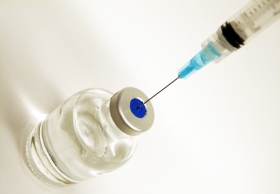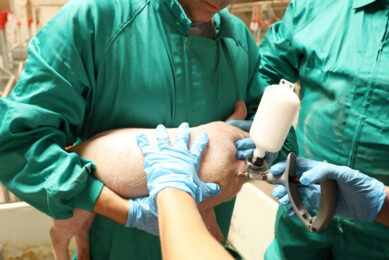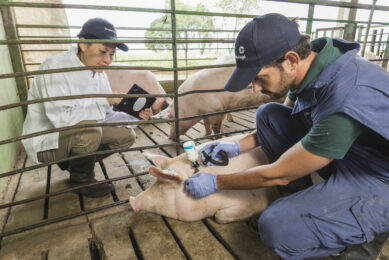British Pig Executive PCV2 trial results

Following the successful introduction of the BPEX PCV2 vaccination national project last year at a cost of £1.66million, over 422 herds, representing 263 thousand sows (61% of national herd) took up the voucher scheme to obtain vaccines in exchange for production data before and after vaccination. This was an attempt to get the national herd back on track regarding health and productivity.
Overall, by the end of 2008 the national mortality figures in nurseries and finishers were back to pre-PCV2 epidemic levels 10 years earlier. Analysis of the extensive data was difficult as there was so much variation. From the breeding herd results, sow vaccination with Circovac increased the number of pigs born and weaned/litter by 0.2 after 6 months and increased conception rates by 5%, both results were statistically significant. Rather confusingly, the piglet vaccinating herds also improved their piglets weaned, conception rates and returns to service, significantly and this was postulated to be due to lowering the viral levels and challenge on the farms. Two large groups of pigs of 41,000 and 30,000 were given the piglet vaccine Circoflex and the results were compared with the previous batches. Mortality significantly fell from 3.90 to 2.19% (-1.71%) in the first farm and 6.40 to 3.39 (-3.01%) in the second farm. Growth rates increased significantly by 58.3g and 38.4g, respectively but FCE improved by 0.03 and 0.08, which were not significantly different.
In a second study, carried out at Leeds University, involving 183 litters and 1776 piglets, half of the sows were vaccinated with Circovac and a further half of the piglets were vaccinated with Circoflex as well. In the unvaccinated sows half of the litters were vaccinated with Circoflex and the other half remained as unvaccinated controls. Total born alive was improved by sow vaccination by 0.5 piglets but this was not significant. Piglet weight at weaning was significantly improved by sow vaccination by 0.3-0.4kg. Post-weaning daily gain, lifetime gain and days to slaughter were improved significantly by both sow and piglet vaccination. The best performance was with the combined sow and piglet vaccination numerically. Mortality was significantly reduced by vaccination in general but not individually, although piglet vaccine alone reduced it by 2.3%. This was in contrast with the results of the viraemic studies using qualitative PCR to determine the number of virus particles present in the blood. The peak viraemia was at 18 weeks and the numbers of pigs with high viraemias were much higher in the sow vaccinated group, similar to the unvaccinated controls in comparison with both of the piglet vaccinated groups, which remained low.
Overall, they felt the scheme had been a success, to improve the health of the national herd. There was clear evidence that the vaccines worked and there was economic benefit resulting from their use but this varied from farm to farm depending on the performance of the unit.
Related website
• Bpex











